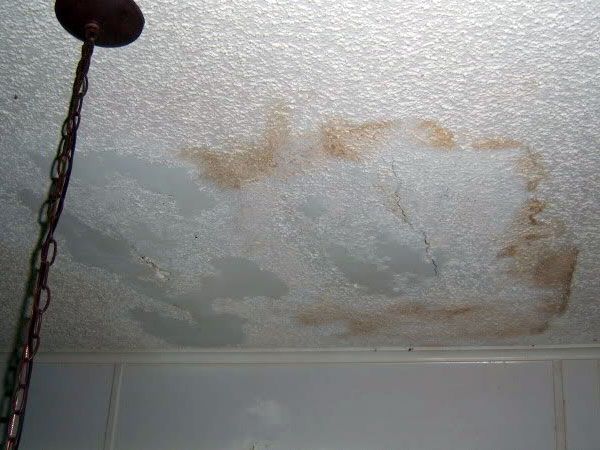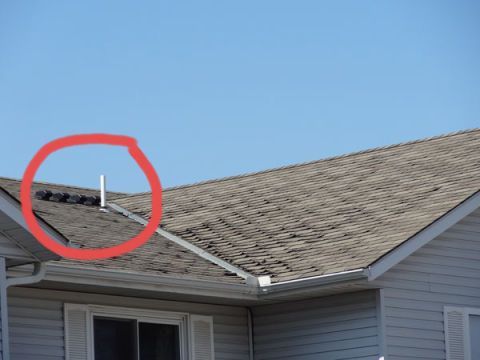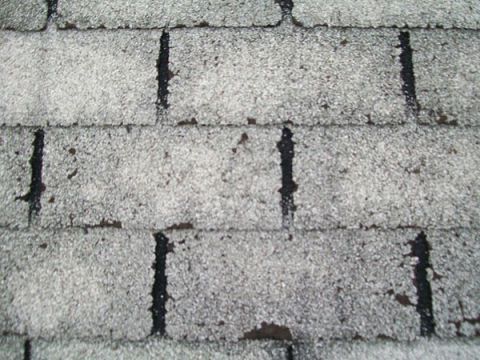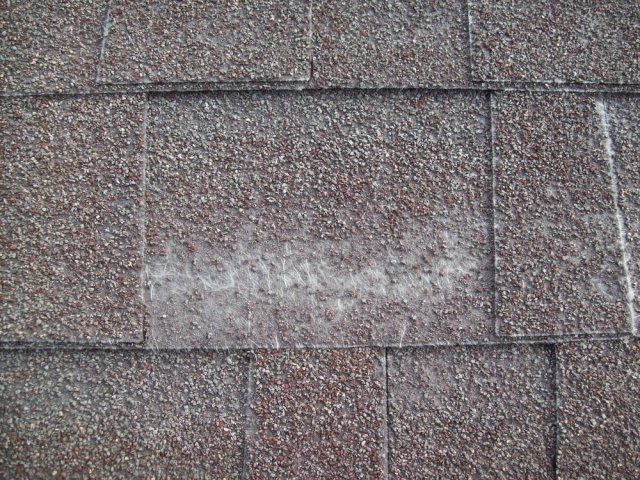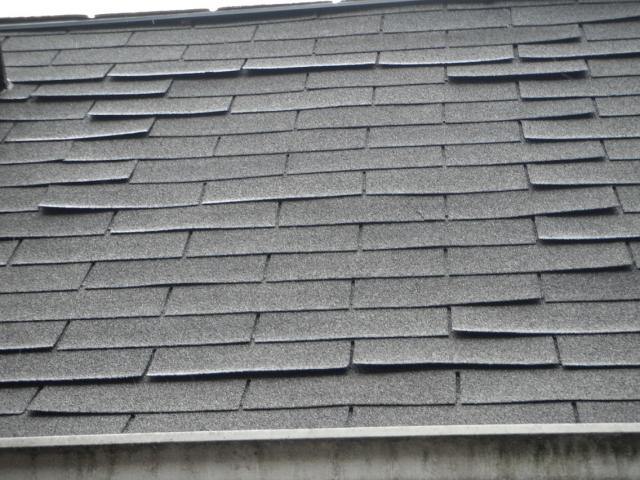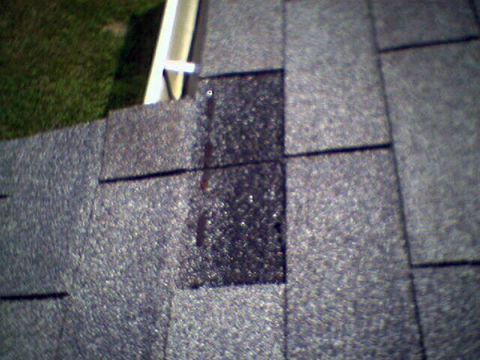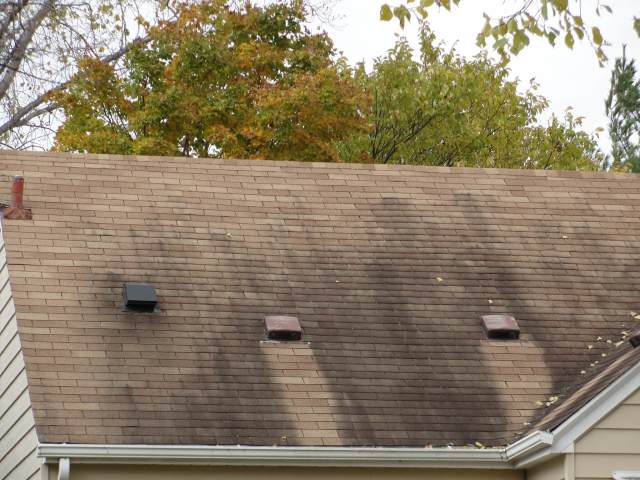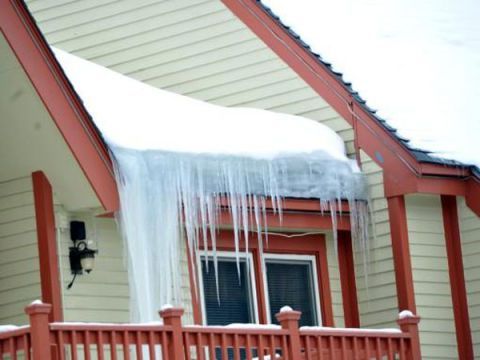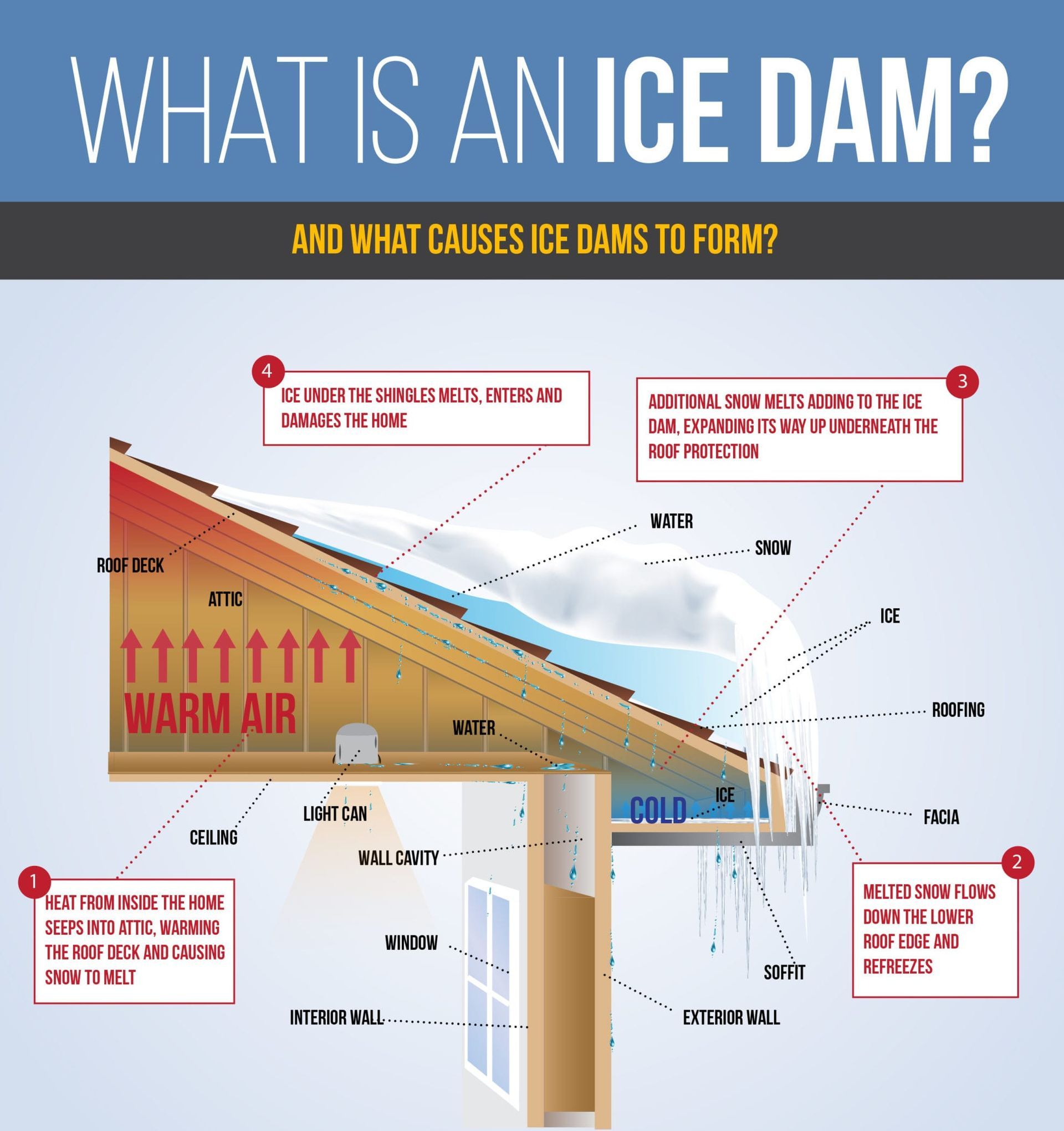8 Things Your Roof Is Trying to Tell You
1. Problem with water spots on your ceiling.
What the Roof is Trying to Tell You:
The roof has a leak, which can be tricky to pinpoint. "A slow leak is harder to find than a big leak," says Joan Crowe, director of technical services for the National Roofing Contractors Association (NRCA). "If it's just a couple of drips, it can be hard to find."
What can make a leak especially difficult to locate is the fact that water doesn't necessarily drip straight down. It can travel along roof panels or lumber in the attic before dripping onto your insulation and leaving the telltale yellow water spot on your ceiling. That means the leak can be far away from where the ceiling shows damage. Unless you have good detective skills when it comes to roof leaks, you'll want to enlist a roofing contractor to help track down the cause of the problem.
Crowe points out that water spots on the ceiling don't automatically mean the roof is leaking. "It could be caused by windows, condensation, plumbing, or even condensation on the plumbing pipes," she says. However, if the spots only appear, darken, or grow in size after it rains, the roof is likely the culprit.
2. Problem with the attic may not be properly vented, and you might need to re-shingle.
What the Roof is Trying to Tell You: The shingles are deteriorating or reaching the end of their lifespan.
"Granules do come off, and they do collect in the gutters," Crowe says, adding that some loose granules are not necessarily a cause for concern. However, if you suddenly notice a lot of the granules flowing out of the downspouts every time it rains, the next step is to get on a ladder and examine the shingles to see if they look "exposed" because most of the granules are gone.
Granules protect against the sun's UV rays, so once they're gone, the shingles can become brittle. In extreme cases, shingles can have smooth or bald spots where all of the granules have completely fallen off.
Losing the granules often means the shingles are old. "The shingles are aging," Crowe says. "They're near the end of their service life." And that means you'll need to replace them. Before you start the project yourself or call a pro to get a quote, Crowe recommends calling the manufacture to see if the shingles are still under warranty.
3. Problem with cracking shingles.
What the Roof is Trying to Tell You: The granules have probably worn off, allowing the shingles to become brittle. They probably need to be replaced.
Another symptom of the same disease. Perhaps you didn't notice the granules washing away, but if you see signs of cracking in your shingles, then it probably means they are being exposed to direct sunlight and are wearing out. "The shingles are approaching the end of their service life," Crowe says. "Asphalt shingles don't like heat."
Again, check whether your shingles are warrantied, especially if they're not supposed to be near the end of their lifespan but you're seeing cracks nonetheless.
Also if you have organic shingles, they also look like this and that roof is deemed irreparable, which would be covered by your insurance company, because the shingles were taken off the market due to them not lasting no more than 10 to 15 years.
4. Problem with your gutters are filled with granules.
What the Roof is Trying to Tell You: The shingles are deteriorating or reaching the end of their lifespan.
"Granules do come off, and they do collect in the gutters," Crowe says, adding that some loose granules are not necessarily a cause for concern. However, if you suddenly notice a lot of the granules flowing out of the downspouts every time it rains, the next step is to get on a ladder and examine the shingles to see if they look "exposed" because most of the granules are gone.
Granules protect against the sun's UV rays, so once they're gone, the shingles can become brittle. In extreme cases, shingles can have smooth or bald spots where all of the granules have completely fallen off.
Losing the granules often means the shingles are old. "The shingles are aging," Crowe says. "They're near the end of their service life." And that means you'll need to replace them. Before you start the project yourself or call a pro to get a quote, Crowe recommends calling the manufacture to see if the shingles are still under warranty.
5. Problem with the shingles curling or cupping.
What the Roof is Trying to Tell You: The attic may not be properly vented, and you might need to re-shingle the roof.
When shingles get old and worn out, the ends sometimes start to cup—the corners turn up or the shingles look wavy. An attic that's not vented properly can exacerbate this problem. If the attic gets too hot, it can heat up the roof, which consequently heats up the underside of the shingles. The heat can cause the shingles to age faster and start to cup. Eventually, that can allow wind-blown rain to work its way under the shingles and leak into the house.
Crowe says that the age of the shingles is more of factor than a hot attic when it comes to cupping or wavy shingles. "There's no data that shows cupping is solely based on the attic being too hot," she says. "The attic may contribute to the problem, but it won't cause the problem by itself."
6. Problem with the roof missing shingles.
What the Roof is Trying to Tell You: You might have a critter getting on your roof, or the sealant strip under the shingles may have been damaged.
A furry animal scurrying around on your roof could be responsible for loose or damaged shingles, Crowe says. "A critter can really do some damage." If tree branches are near or touching the roof, they can provide a pathway for animals. So trim them back.
Shingles have a sealant on their underside that helps hold the shingles in place, Crowe explains. If the shingles become old and brittle, the sealant can fail and the shingles, even when nailed down properly, can come loose in severe winds. "It really takes a good wind to knock them off," Crowe said.
When shingles do come loose, they need to be replaced. "Shingles rely on an overlapping pattern to keep out water,"
Call, text or email us today for a free estimate.
7. Problem with black stains on the roof.
What the Roof is Trying to Tell You: There are algae growing on the shingles.
Although this looks ugly, it doesn't create other problems with the roof. "It's an aesthetic thing," Crowe said. She doesn't recommend cleaning the shingles with a power washer. "It's so powerful that it might take off the granules."
Placing zinc strips near the ridge of the roof that release a fungicide when it rains can kill the algae. Or you can replace your existing shingles with algae-resistant ones the next time you re-roof.
8. The roof leaks when the temperature fluctuates between warm and freezing.
What the Roof is Trying to Tell You: You probably have ice dams. Ice dams are caused by freeze-and-thaw cycles that allow ice to build up on the roof and block melting snow from draining off. That backed-up water can get under the shingles and leak inside. Ice dams can form in as little as 1 or 2 inches of snow.
"It's hard to do anything about them after the fact," Crowe says. Newer roofs typically have an ice-and-water barrier installed along the eaves, where the dams typically form, to prevent the water from leaking inside, but is not full proof. There are ice-dam cables you can install on your roof, which heat up to prevent ice dams from forming at the eaves. But the National Roofing Contractors Association does not endorse them. "You're combining water and electricity, which is never a good idea," Crowe points out. "You're also heating the roof, which isn't good."
Ensuring the attic is well-insulated can help prevent the dams from forming, because it helps to stop warm air from escaping into the attic and melting the snow on the roof. Proper attic ventilation can also prevent them by keeping the attic cooler.


